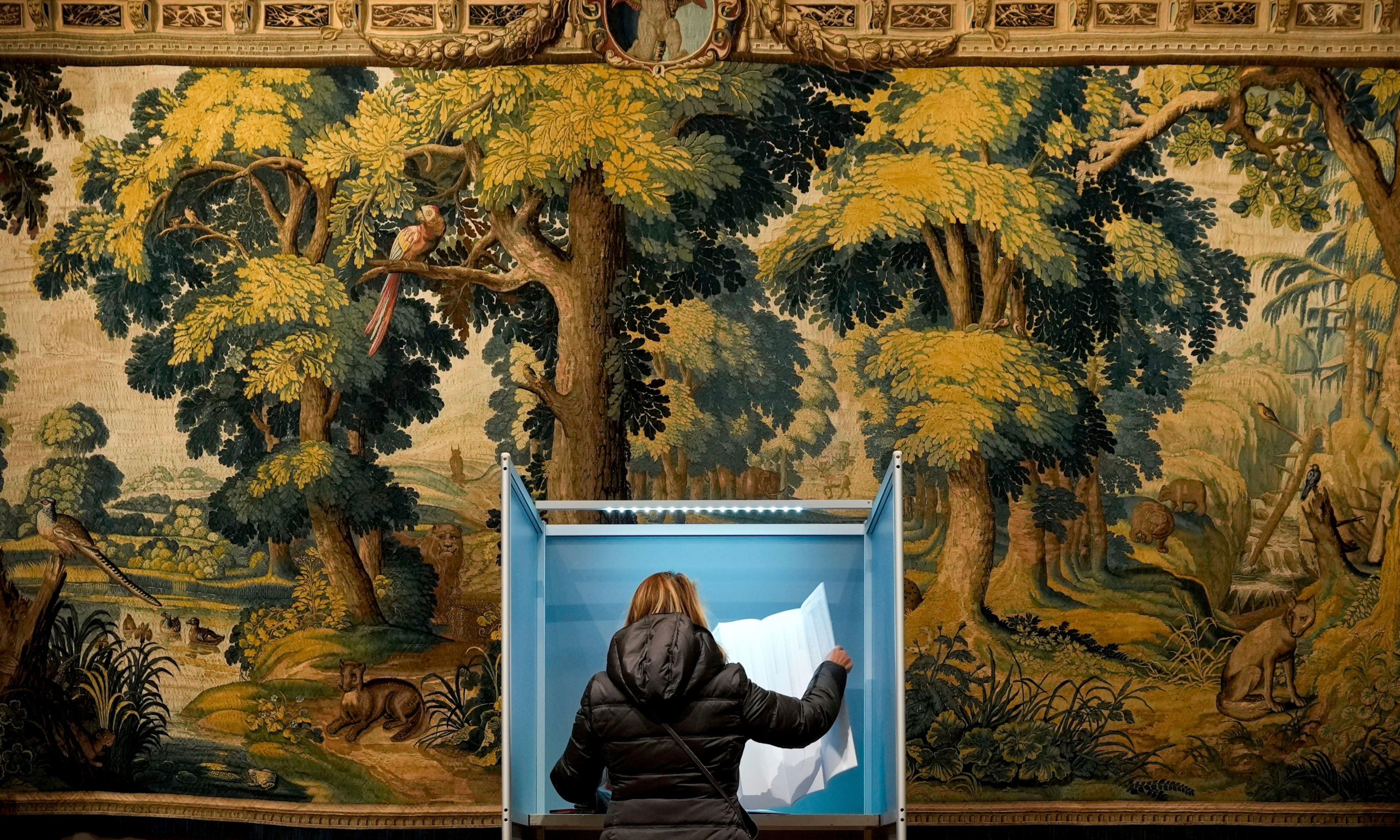A woman looks at her ballot at the Rijksmuseum Twenthe museum in Enschede during November's elections
Photo: Associated Press / Alamy Stock Photo
Leading figures in the Dutch art world have warned the country's cultural life could suffer long-term damage under the next potential government. Last November, veteran anti-immigration MP Geert Wilders and his Party for Freedom (PVV) won the largest share in the general election and four right-wing parties are now discussing forming a coalition.
There are serious concerns about the implications this could have for the country’s worldwide cultural standing, the restitution of looted art, funding for the arts and access for international students and artists-in-residence.
During the election campaign, the PVV published a manifesto in which it pledges to “stop art and culture subsidies”, alleging that “native” Dutch people are “discriminated against” in areas like the arts. “We will scrap all of the nonsensical subsidies for art, culture, public broadcasting, expats and going green,” says the manifesto.
Last week the Dutch Museum Association warned that while more residents than ever are members of a museum card visiting scheme, public funding must continue because some organisations are struggling. “It is hugely important that museums stay financially healthy in the future and are accessible to a broad public and this means that the government needs to keep investing in our communal heritage,” warned director Vera Carasso.
The Art Newspaper understands that there are also concerns within the Dutch art world about what a Wilders-led government would mean for restitution policy. Policy in this area changed in 2020 to show “more humanity and goodwill” for alleged Nazi looted art, while the Dutch returned almost 500 confiscated colonial objects to Indonesia and Sri Lanka last year.
Leading figures in the Dutch arts sector have privately and publicly expressed worries, stressing the economic, social and intangible value of a thriving cultural scene.
Wim Pijbes, the former general director of the Rijksmuseum, who is now the director of the Droom en Draad foundation and a key figure in an upcoming FENIX Museum of Migration, told The Art Newspaper this was the time to move culture up the agenda. “Four parties are trying to make a new government, but it’s still questionable if they’ll succeed or not, so maybe it’s too early to have a final judgement,” he said.
“I would urge the new government to keep in mind that culture is fragile. It’s more easily broken than repaired, and it takes a long [time] to recover from any backfall—[whether it's] money, trust, a changing world. Culture is long-term, and it’s difficult to count… but if you disturb connections then the effect might be much bigger and unpredictable.”
Emily Pethick, the director of the Rijksakademiein Amsterdam—which runs an international artist residency programme that also fosters future talent for jobs in teaching, museums and other public spaces—says institutions are still suffering from the effects of cultural budget cuts in 2011 and the Covid-19 pandemic. She fears they would be harmed by attempts to limit immigration, one of the key targets of the potential new government.
“The Rijksakademie is hosting at least 24 international artists a year [so] the indicated future limitations on migration are very concerning,” she added. “A big part of the benefit for Dutch artists is working alongside and exchanging with international peers, and through these [interactions] they make links that take them to other parts of the world. It is already very difficult for artists to be able to stay here beyond their residencies, to contribute to the art scene here.
“If this is limited further, there will be a shrinking of the current internationalism, which would hugely damaging, and would certainly create a more disconnected and inward-looking cultural sphere.”
Annabelle Birnie, director of H’ART Museum—formerly the Hermitage Amsterdam—pointed out that arts and culture help Dutch society process difficult problems and opinions without conflict.
Although her museum gets no public funding, it depends on international collaboration with the Centre Pompidou in Paris, the Smithsonian Institution in the US and the British Museum. Without this global inflow, she says, the country would be poorer. “It’s an international scene, a big chain, and if somewhere is broken, it is bad for everybody,” she said. “Artists stand on the shoulders of their art schools, museums stand on the shoulders of artists, and if the chain breaks, it won’t help us further [develop] the 21st century tools to look at the world we live in. There’s a lot to gain with art and culture. And we’re too small to look inwards.”

